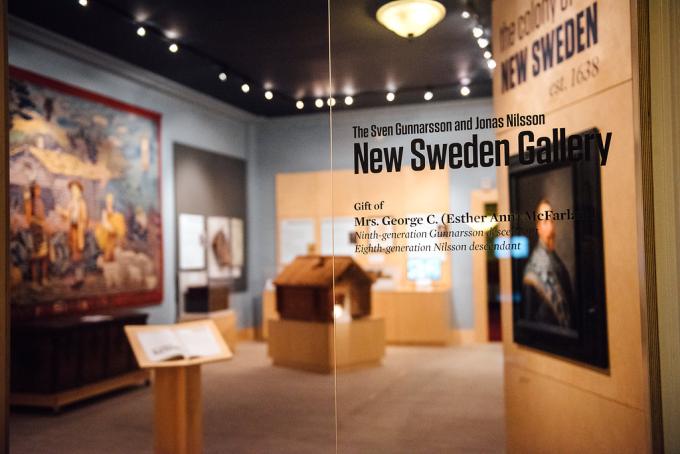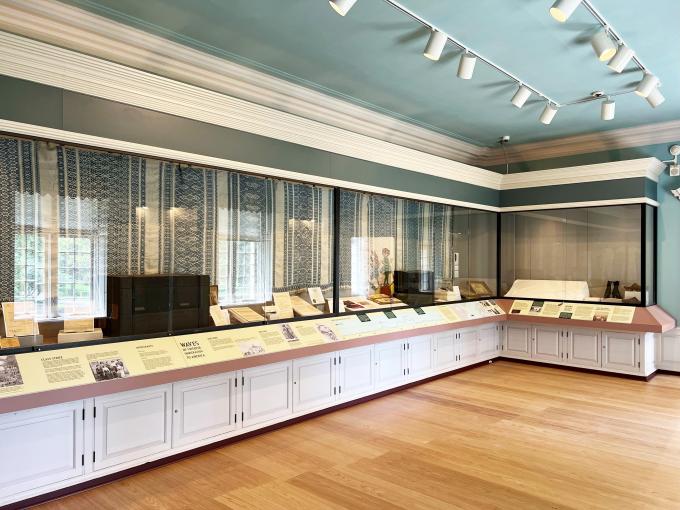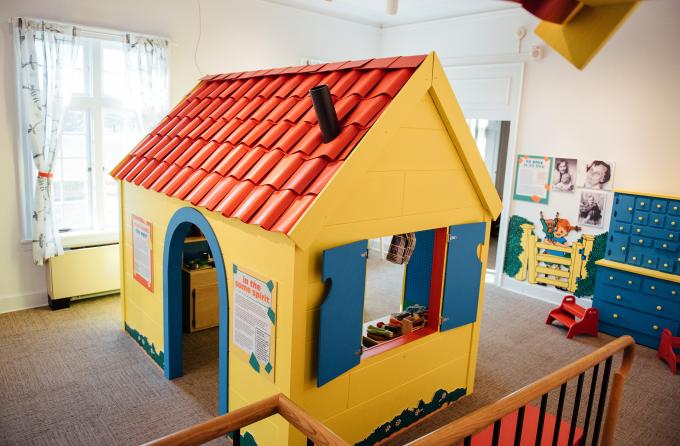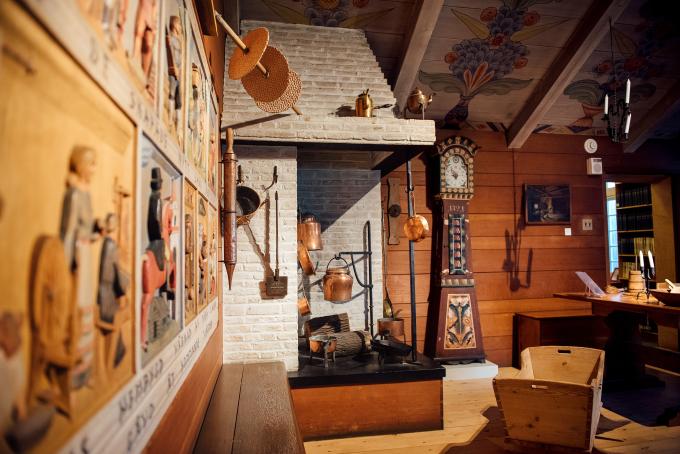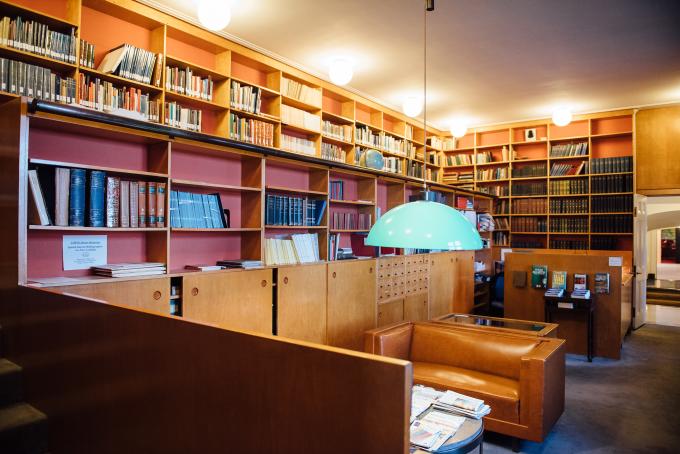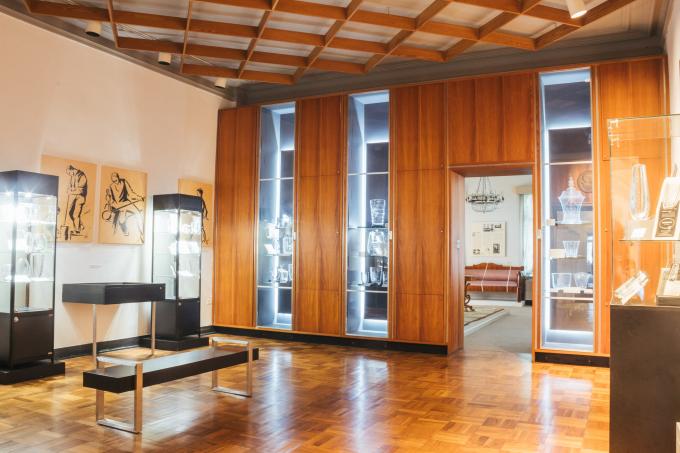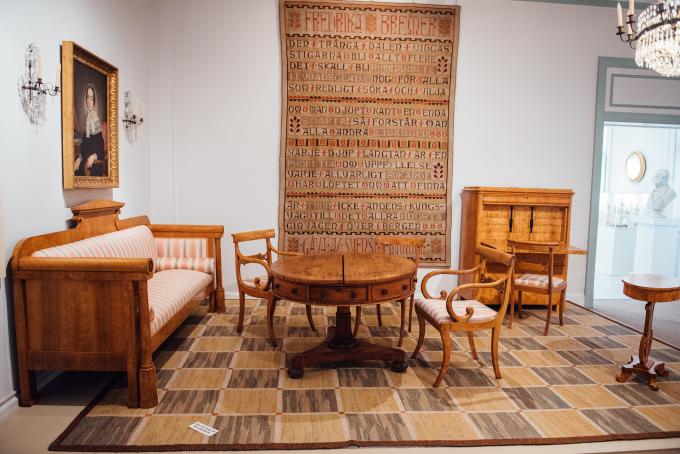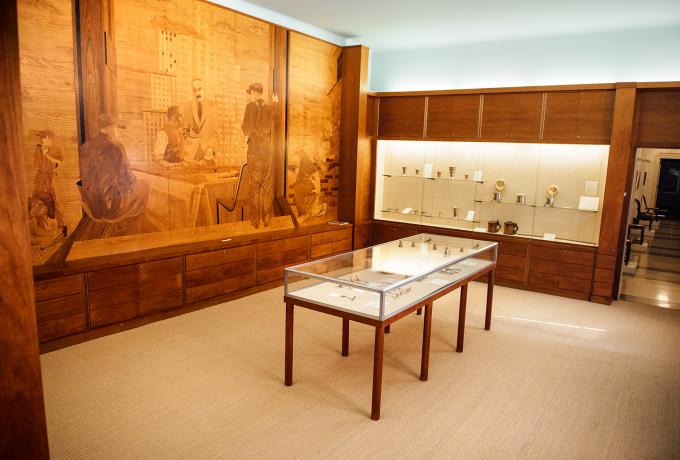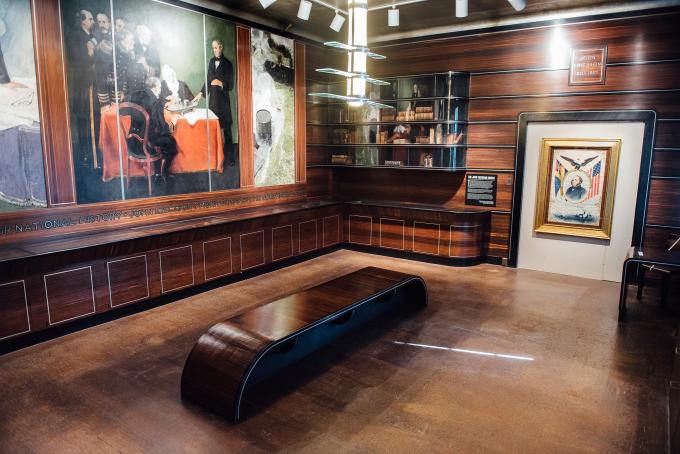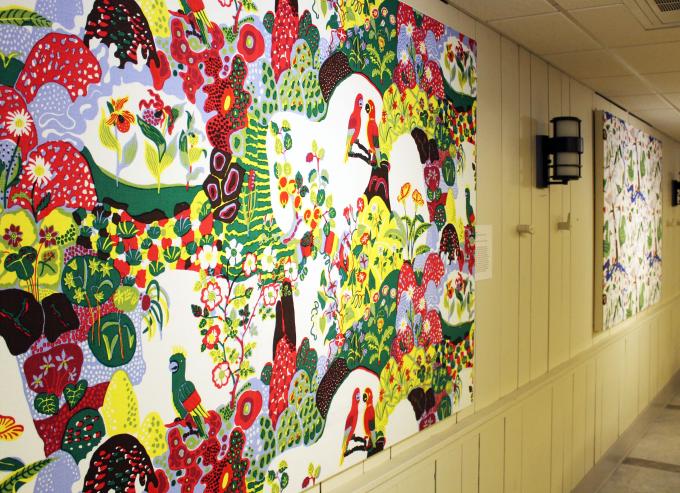From the age of the Vikings to the settlers of the New Sweden Colony (1638-1655), to contemporary issues in Scandinavian society, the American Swedish Historical Museum will take you back in time and across the sea to learn the stories of Swedes in America.
Architect John Nydén, a Swedish-American from Chicago, designed the building to reflect both Swedish and American architectural elements. The Swedish inspiration comes from Eriksberg, a 17th century manor house in Södermanland, Sweden.
This room has a striking map depicting Sweden at the height of the nation’s political power. Painted on bronze leaf by Sten Nilsson in 1938 the “golden map” features vignettes of everyday life in Sweden and its dominions during the early 1600s.
This gallery and the Golden Map Room are both devoted to the history of the New Sweden Colony, providing a wealth of information about this often unfamiliar period in US history, beginning with the Swedish empire's colonial vision in 1626 to the impact of William Penn at the end of the 17th century.
Weaving a New Chapter: The Material Lives of Swedish Immigrants tells the story of Swedish immigration to America through the objects they brought with them in the 19th and early 20th centuries.
Step into the colorful world of Pippi Longstocking! This interactive exhibition space is for the young and young at heart.
The Museum’s Nord Library is a not only a beautiful example of Mid-Century Scandinavian design, but is also houses a wealth of information on a variety of topics. Researchers and visitors are welcome to utilize our collection at their leisure (museum admission applies).
The Linnaeus- Kalm Gallery celebrates 300 years of Scandinavian glass in this newly renovated installation.
This room is devoted to the accomplishments of Swedish women and named for feminist Fredrika Bremer (1801-1865), a Swedish novelist and advocate for women’s and human rights.
This room is named for the “Swedish Nightingale”, operatic singer Jenny Lind (1820-1887). Artifacts illustrate Jenny Lind’s widespread popularity during her 1850 American tour, which was managed by famed showman, P.T. Barnum.
Built in 1936, this room honors Swedish architects, manufacturers and builders who contributed to the American landscape. The focal point of the exhibit is a wood inlay mural by Ewald Dahlskog featuring the Chicago skyline in the 1930s.
The Art Deco style of this room is reminiscent of the luxury ocean liners of the 1920s and 1930s. Finished in Macassar ebony, ebonized birch and aluminum, this stunning interior was designed by Martin Hedmark in 1931.
Josef Frank (1885-1967), an Austrian-born designer and architect, is a much-celebrated leading pioneer of Swedish Modern design. His lavish use of bright, bold colors and floral patterns quickly became popular with a host of Swedish designers and clientele.



